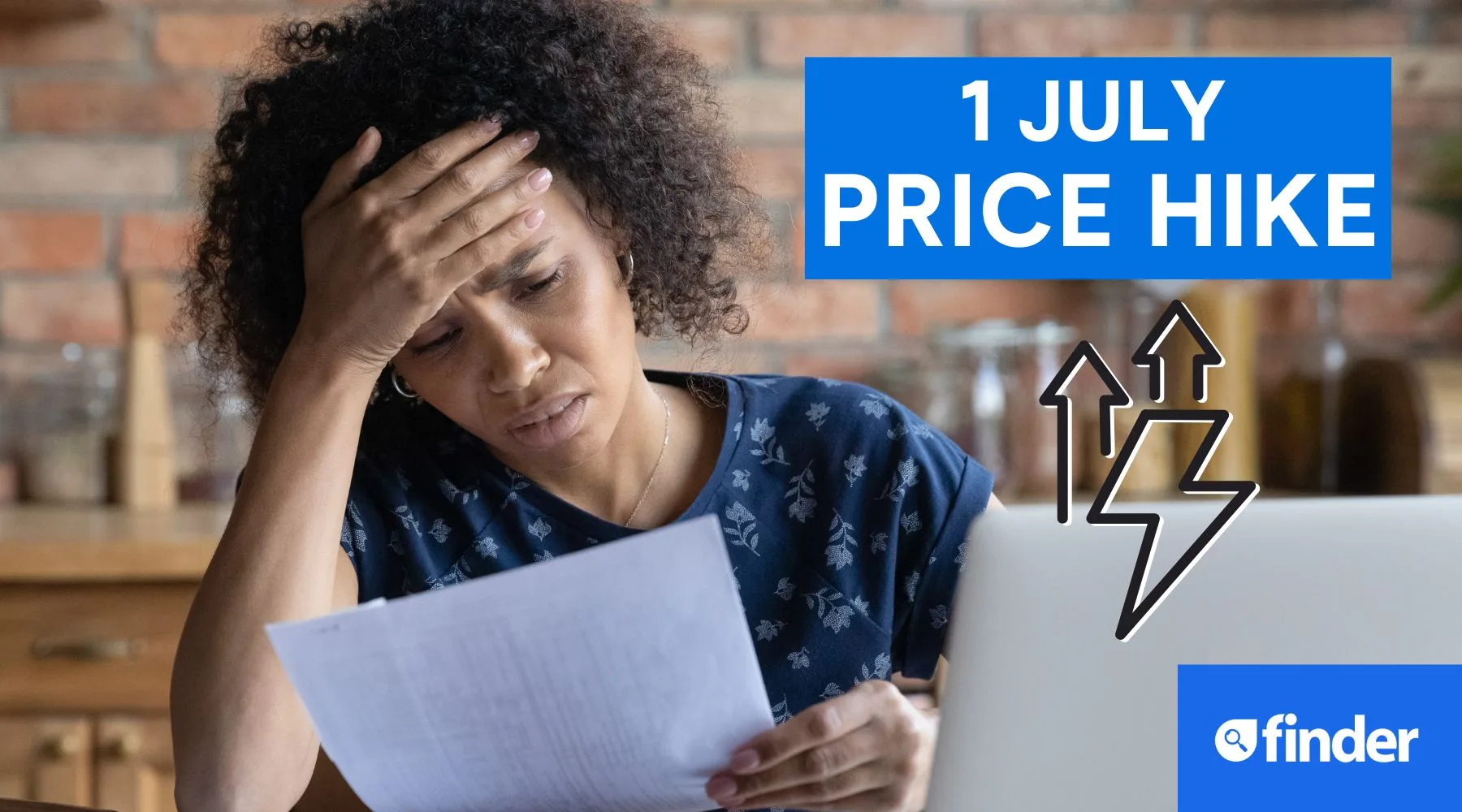Electricity prices go up 1 July – and there’s one thing you really need to do

From 1 July, millions of Australians will be impacted by rising electricity prices. Households in NSW, VIC, SA and southeast QLD will be hit the worst.
Energy regulators will officially pass on rising electricity costs to households when they increase their benchmark pricing by as much as 27% depending on where they're based and their energy distributor.
The benchmark price (also known as the Default Market Offer or standing offer) is set to help you compare energy plans. It also acts as a safety net for households that don't shop around and is the maximum you can get charged by your retailer.
In Victoria it's called the Victorian Default Offer (VDO) and is set by the Essential Services Commission. In NSW, VIC and SA the Australian Energy Regulator sets the benchmark or reference price as is commonly referred to.
So, what should I do to avoid the worst of the electricity price hikes?
The one thing you need to do is compare energy plans from 1 July onwards to see if you can do better with another retailer. This especially goes for households that have been told by their current provider their plan prices are going up.
Unless you don't compare plans, you won't know how bad your retailer's price increase is going to be. You should definitely avoid paying above the benchmark price set in your state.
When you're comparing plans, look out for:
- Usage rates and supply charges
- The difference in your annual estimate from the reference price or VDO
- Are there sign up discounts or bill credits
- Additional charges such as move-in costs, credit card fees, disconnection fees. These can vary between providers
Enter your postcode to start comparing energy plans or bookmark this page for until 1 July and then start comparing your options. Good news is there's a 10-day cooling period and you can cancel your plan at any point with facing any charges.
How will rising electricity prices impact my state?
You're likely going to be on a standing offer if you haven't switched or negotiated to a new plan in over 12 months.
As opposed to market offers that are usually better value and come with discounts, standing offer plans are less attractive and can end up costing you hundreds of dollars extra on your power bill.
Here's a breakdown of the price increase for each state that falls under the National Electricity Market (NEM).
- NSW. Prices to go up by 19.6%-24.9%, equivalent to $315-$487 annually
- QLD. Prices to go up by 20.5%-21.5%, equivalent to $349-$402 annually
- SA. Prices to go up by 22.5%-23.9%, equivalent to $439-$512 annually
- VIC. Prices to go up by 22%-27%, equivalent to $278-$394 annually
Energy retailers are also increasing the rates on their market offer plans so your biggest takeaway should be that you're going to have to shop around for a better energy plan from 1 July to see which provider will impact you the least.
Use our interactive table to punch in your postcode and see the exact impact of the increase for where you live.
Tasmania is also part of the NEM but its prices are set by the Tasmanian Economic Regulator. Earlier in June, the watchdog said it would increase power prices by 9.5% from 1 July.
Regional QLD will face up to a 30% price hike as determined by the Queensland Competition Authority. Regional QLD's electricity market is regulated and works differently to southeast QLD.
Other states in Australia that are not included under the NEM will not be impacted by the electricity price hike via benchmark prices.
"Energy retailers enter into supply contracts with generators years in advance to manage volatility, so households haven't yet seen the full impact of last year's wholesale price spikes," said ACCC Commissioner Anna Brakey in a media release.
Brakey's comments come following the release of ACCC's latest Electricity Market Inquiry Report which shows residential electricity bills were higher across most NEM states in the September quarter in 2022 compared to the same quarter in 2021.
You might be eligible for up to $500 in energy bill relief. Find out if you qualify as this can soften the blow of higher power bills in the new financial year.
Ask a question
